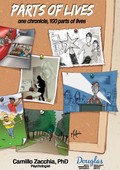How do we learn things? We read, we attend lectures, we listen while others share experiences. It’s all good! And yet there are times when, despite hearing something over and over again, it just never seems to really click.
Conversely, we sometimes do things over and over again and never seem to learn. Our experiences don’t lead to corrective action as quickly as one would expect. The reason for this is that the learning process requires both instruction (theory) and experience (practice) in combination to work best. Separate them and the learning process slows to a snail’s pace.
This is why parents are so frustrated when their kids don’t seem to learn. In reality, parents heard the same things from their own parents when they were kids. Unfortunately, they didn’t really appreciate the advice until they had relevant life experiences. The same goes for their children. They simply cannot learn the same lessons as their parents until they live their own experiences.
But experience without instruction cannot teach very much. I used to constantly miss short putts. No matter how much I practiced in my basement or on the golf course, nothing seemed to help. It was only after I read an article that helped me understand how my hip rotation was the reason for the misses, that I became a pretty good putter.
Of course the rest of my game still sucks.
Anyway, here is the original English version of the September 9th column:
Learning through instruction, learning through experience
(Source: Journal Métro, Apprendre par l’enseignement, apprendre de nos expériences. Sept 9, 2008)I once sat with a reporter after we finished filming a short interview. We talked about the challenge of raising children. She told me the story of her son who complained one day after his sister’s friend visited for dinner. “I almost threw up while we were eating. That girl made gross noises while she ate! His mother answered, “That’s why I told you a thousand times not to slurp your food and to close your mouth when you eat.”
I’m sure that this boy will eat quietly for the rest of his life.
I love this story. It illustrates the learning process at its best. There are many ways to learn but the best one involves two steps. The first is through theory and instruction; the second is through practice and experience.
Sometimes we get discouraged when someone we want to influence, such as a child or a friend, does not follow our advice. Yet that doesn’t mean we had no impact. What we say may appear to fall on deaf ears in the short term. But in the long term, after the person matches what you said with a number of life experiences, those words can still resonate and have their desired impact.
The two steps cannot be easily separated. Experience alone can teach us a great deal of things but unfortunately we might miss out on hundreds of learning opportunities without the instruction that makes us appreciate them. Instruction helps us focus our attention on specific events which then click into place and have a lasting impact on how we see and understand things. Take a simple example such as bicycle safety. Doesn’t it usually take a nasty fall before we start to follow the rules more rigorously…and to truly understand them?
Just think back to all the important books you read, or movies that touched you, or classes that made a difference in how you see life. Did you realize at the time how much of an influence they would have on you? Probably not. You needed to add some experience to them in order to feel the full impact.
With that in mind, listen to your teachers, parents, and friends with an open mind. Then sit back and experience your lives. You never know which of those lessons will eventually hit home.
Tagged as children, experience, learning.
Posted in Human nature.
Posted on 17 Sep 2008
